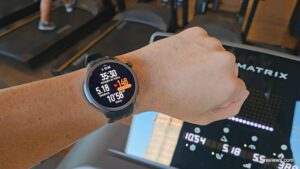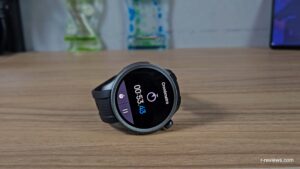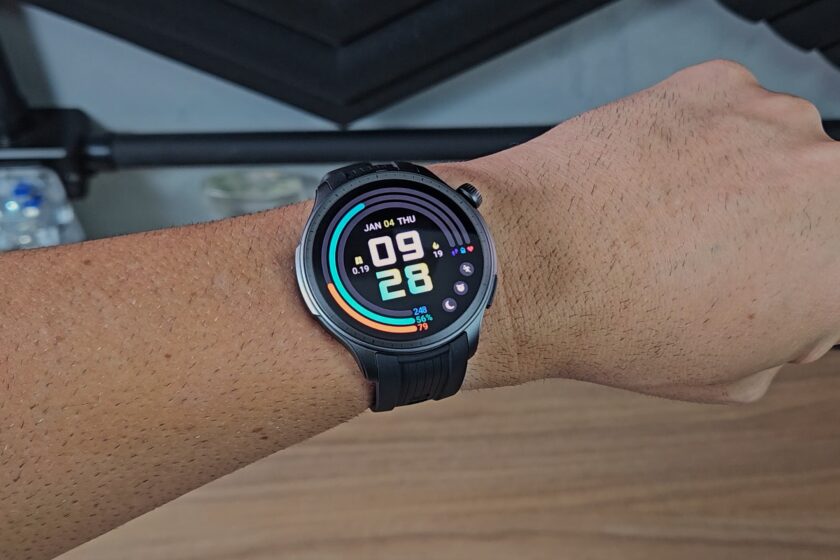Where to buy? Amazfit’s Store at AliExpress
Amazfit is a Chinese brand that has been gaining respect among technology enthusiasts for a long time, not a beginner at all. But they’ve always positioned themselves well with “value for money” products, which creates the idea that they’re not exactly among the top contenders on the market.
However, some of its latest products have the potential to change that view. Today, I’m talking especially about the Amazfit Balance, a very complete smartwatch. Costing around 230 dollars, it delivers good build and lots of functionality.
Quick description. It has a 1.5-inch AMOLED screen with lots of brightness and high resolution: 480×480. It’s a relatively large watch, with a 47mm case, but it has a low profile when worn. The matte metal on top gives it a discreet appearance – not as flashy as Samsung or Apple options.
When I started using it, the impression was good. There are two buttons on the right, and one of them works as a rotating crown, just like an Apple Watch. Responsiveness is surprisingly (?) good, as is speed when operating its proprietary Zepp OS 3.0. By sliding my finger on the screen or spinning the main button, I noticed great smoothness, even higher than in some Galaxy Watches with Google’s Wear OS.

The hall of features and sensors is extensive. I’ll highlight accelerometer, gyroscope, oximeter, body temperature and heart rate sensors, sleep monitor, ECG, body composition, and of course, GPS. There are also mic and speakers for making and receiving calls, as well as good integration with Alexa, which I used mainly to set timers without handling the device too much.
On the sports side, the Balance monitors around 150 activities, and I used it for outdoor runs or (mainly) on the treadmill. In this second option, it cannot use the GPS, so it only has the accelerometer to measure distance. In the first few workouts, I adjusted the final distance in the watch according to what was shown on the treadmill. After that, it practically got my exact walking results right in the third training session, and my running results, around the fifth one. There’s compatibility with Apple Health, Google Fit and Strava, which I haven’t put into practice yet.

My main complaint with this model is the fact that it still isn’t capable of downloading apps such as Spotify, which would allow me to use my own playlists easily. Playing music is supported, but only via MP3 files copied to internal memory. Inside the smartphone app (iOS and Android compatible), there’s even an app store, but it’s a very simple implementation, with very few interesting software. Maybe there will be something more robust in the future.
Also, I need to point out that the notifications system still needs optimization. The watch missed warnings given by one or another app, and also, notifications that had already been dismissed eventually returned when the app in question sent a new update. It’s something that has already been reported in the past about the Amazfit’s watches, and can’t be ignored.
In my daily use, with few notifications and almost daily training (most without GPS), the battery discharged under 10% per day on average. It’s not at the level of simple smartbands, but it’s above the average for the most popular advanced smartwatches. Not bad.

After almost a month using the Amazfit Balance, my general impression was well reflected in this text: very positive. It’s a product that attacks on all fronts, and does the job well on almost all of them. The lack of a robust app store still makes it difficult to position it alongside big names like Apple Watch or Galaxy Watch, and there’s still a way to go in order to face the prestige of these competitors. Anyway, it’s still a top-notch product, with great features and good execution.

